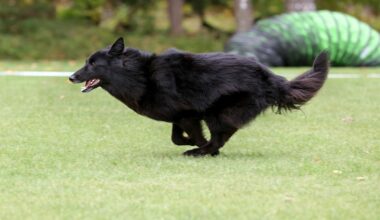Optimizing Your Agility Ladder Setup for Small Spaces
Using agility ladders in small spaces can be challenging, but with the right approach, effective workouts can still be achieved. To optimize your agility ladder setup, consider clearing any surrounding clutter that might impede your movements. Measure the area where you’ll set up the ladder to ensure adequate space around it, allowing enough room for your body movement. If working indoors, designate a specific room, perhaps a garage or living area, particularly high on flexibility. Position the ladder on a flat surface, ensuring it won’t shift during use. Get familiar with the various agility drills that can be executed at different intensity levels. A clear plan enables better exercise execution. Explore modified drills that utilize only parts of the ladder rather than the whole setup. Incorporate vertical movements along with traditional side-to-side patterns. Experiment with non-traditional object placements, such as cones, to elevate your training experience. Choosing a shorter ladder for confined spaces may provide you better results due to limited mobility. By customizing your agility ladder workouts for smaller areas, you can enjoy effective training with ease.
Beyond the ladder’s setup, knowing how to maintain the equipment ensures longevity. Regularly check for frayed edges or damaged rungs, as these issues can create hazards while training. Cleaning your agility ladder is essential, as dirt or debris can affect performance. Depending on your training frequency and where you use it, routine maintenance can be scheduled as needed. Also, understand the types of surfaces best suited for agility ladder use. Prolonged usage on concrete surfaces may lead to wear and tear much quicker than on grass or gym flooring. Some trainers prefer to use agility ladders in open spaces to enhance their dynamic movement practice. Alternatively, consider how the ladder’s color may impact your workouts. Brighter colors may improve motivation and visibility, which can enhance performance. Always strive to keep the ladder away from moisture to prevent mold growth, which can compromise durability. Pack your equipment securely after each session, potentially using a storage bag. Doing so keeps the ladder organized and ensures easy access when needed. With proper care, your agility ladder can be a lifelong tool for enhancing speed and coordination, even in limited spaces.
Customizing Your Training Routine
When working with agility ladders in small spaces, selecting specific exercises custom-tailored to agility training goals is vital. A range of drills can significantly enhance your footwork, coordination, and overall athletic performance. For instance, start with basic ladder drills such as high knees, lateral shuffles, or in-and-out steps. Gradually, as your proficiency grows, elevate the intensity by adding lateral jumps or crossover steps. These variations keep your routine fresh and engaging. Furthermore, incorporating short sprints at different ladder positions can also boost your explosive speed and quickness, key attributes in sports. You may even mix in plyometric exercises like burpees or squat jumps between agility ladder drills for a comprehensive workout. Additionally, setting time challenges can stimulate competition and motivation within your training regimen. Try dedicating intervals to training with short rest periods in-between to increase cardiovascular fitness while working on agility. Use a timer or an app to track your progress and ensure your workout remains efficient. Ultimately, customizing your training allows you to focus on specific skill gaps, enhancing your overall performance in any physical activity.
Another essential aspect to consider is the setting of achievable goals that align with your advantages, enabling measurable assessment of your progress over time. Establish short-term objectives, such as improving foot speed during particular workouts or increasing the number of consecutive repetitions within a specified timeframe. Setting these milestones fosters motivation and encourages commitment to your agility training regimen. In addition, an excellent way to keep yourself accountable is by documenting each agility workout in a fitness journal. Include details such as types of exercises performed, duration, and progress observed. Reviewing this journal may provide insightful information on successful areas that need further improvement. Moreover, soliciting feedback from training partners or coaches can enhance your development significantly. Remember that agility ladder training not only targets physical fitness; it also positively impacts mental attributes like focus and situational awareness. Practicing consistently trains your body and mind to react quickly and efficiently, essential for athletic performance. Personalize your sessions to reflect your individual fitness level and the space available, bringing a sense of accomplishment. Instead of feeling confined, view your small training area as a unique opportunity to foster creativity in your workouts.
Making the Most of Limited Space
Creativity can play a crucial role in maximizing your small training area while using agility ladders. A compact setup allows for unique adaptations of conventional exercises that ensure optimal training efficiency. Be innovative with the available space by experimenting with various ladder placements. Use one or two sides of your designated area, flipping the ladder for different approaches. You can also set up drills that integrate other stability tools, such as balance boards, to enhance your agility without requiring additional space. Incorporate movements that utilize objects around you, like chairs or tables, for added challenge. Creating more engaging workouts leads to greater retention and enjoyment. If sharing your training space with others, adhere to visible signals or use colored cones to mark territories. This way, everyone can work out safely without interference. Additionally, consider using resistance bands or medicine balls in conjunction with your agility ladder drills. These elements can provide further resistance and amplify workout intensity without needing more room. Ultimately, smartly managing limited space and integrating alternative tools enriches your training experience while maximizing every session.
As you improve your skills and grow comfortable with various agility ladder drills, it becomes essential to challenge yourself further to avoid stagnation. Progressing over time should encompass variations in workout durations, speeds, and intensities. Interval training can be a great way to mix things up and provide progressive challenges during smaller training sessions. Consider alternating fast-paced intervals with lower-intensity rates, inducing your body to adapt continuously without risking frustration. Moreover, incorporating agility drills into circuit training can maintain an efficient workout schedule even in tight spaces. By adding strength training components such as push-ups or crunches, balance becomes achievable alongside flexibility. Furthermore, enhancing your agility exercise repertoire allows for more enjoyable sessions, as variety can help sustain motivation. Challenging your agility capacities not only keeps workouts exciting but also continuously develops your coordination, flexibility, and overall athletic prowess. Build your circuit around the agility ladder, focusing on transitions between exercises and minimizing downtime. Ultimately, finding innovative ways to challenge yourself may lead to unprecedented levels of agility efficiency, maintaining your objectives and passion for fitness.
Staying Engaged and Inspired
Lastly, keeping engagement levels high is critical for maintaining consistency within your agility ladder regimen, especially in confined spaces. Utilize social media platforms or online fitness communities to find inspiration and share success stories with others pursuing similar goals. By surrounding yourself with like-minded individuals, motivation becomes infectious. Video tutorials found online can offer fresh insights and valuable techniques to bring your agility training to the next level. Participate in fitness events or workshops geared towards agility training, which not only raises curiosity but strengthens your commitment. Setting up friendly challenges with fellow fitness enthusiasts leads to enjoyable workouts and fosters camaraderie. Regular changes to your routine can prevent workout monotony, bolstering your enthusiasm over time. One compelling strategy is to incorporate music playlists that energize and elevate your workout mood. Choose upbeat tracks that synchronize with your drills, amplifying enjoyment and engagement. Finally, embracing a positive mindset towards your training in small spaces equips you to better face and overcome challenges. Finding satisfaction within each workout while celebrating your achievements enhances mental strength alongside physical performance.
In conclusion, optimizing your agility ladder setup for small spaces requires creativity, planning, and dedication. Effective workouts thrive in confined areas with the right mindset, encouraging a commitment to your agility training. By customizing your training routines, maintaining equipment, and progressing thoughtfully, you enhance your skills while enjoying every moment spent on the ladder. Establishing achievable goals combined with consistent evaluation ensures improved agility and performance. Cleverly utilizing available space, integrating tools, and consistently challenging your limits ensure an engaging workout experience. Finally, staying motivated by surrounding yourself with supportive communities will lend positivity and dedication to your training. Together, these combined efforts foster a successful fitness journey centered around using agility ladders efficiently. Remember to celebrate every milestone achieved, no matter how small, as each contributes to your ongoing fitness journey. Seize the moment while embracing the creativity in training, regardless of how limited your space may initially appear. Commit yourself to this new and exciting exploration, ensuring personal growth and overall improvement throughout your agility journey.


